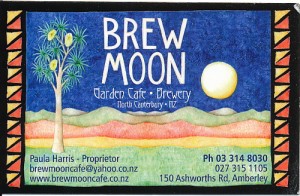To enjoy the stories and images, please click here
Thursday, Dec 10: Muralist/Artist Ellen Joseph Invites You View Her Latest Work at US Bank
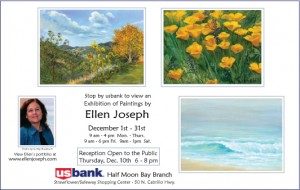
Ellen Joseph
Muralist and Fine Artist
www.ellenjoseph.com
Studio: (650) 728-7518
Cell: (415) 722-7420De
On the Road in New Zealand: One Flat White In A Tulip Cup, Please
On the South Island in New Zealand there’s a Half Moon Bay Scenic Reserve Stream Walk

A few weeks ago, my New Zealand guide, silver jewelry designer Paula Martin visited the reserve and enjoyed the sight of baby seals playing in the misty falls. They had somehow gotten way upstream to this dreamy place. When we revisited the falls a couple of days ago, the baby seals were gone, probably to join their family at the sea– but please join me now on the beautiful walk…
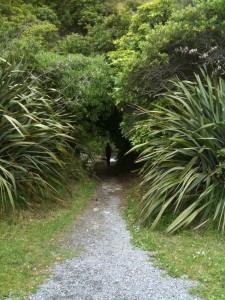
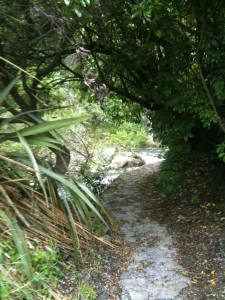
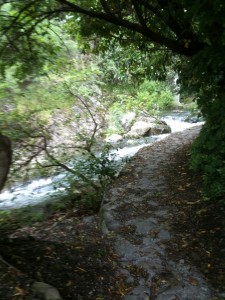
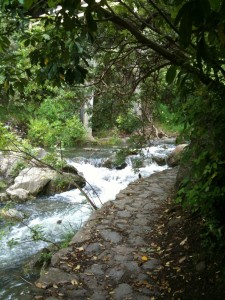
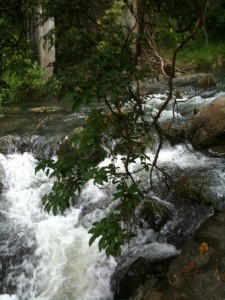
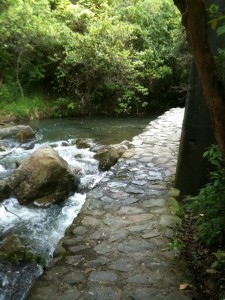
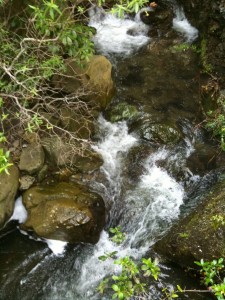
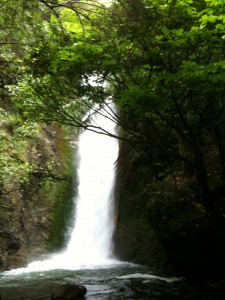
Dr. Eric Z. Shapira Autographing “A New Wrinkle” at Harbor Books….
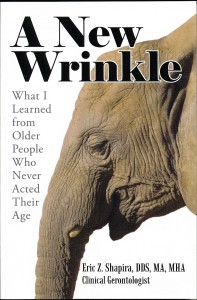
Luckily, I ventured into a very busy Harbor Books at Princeton-by-the-Sea this afternoon in time to pick up an autographed copy of Dr. Eric Shapira’s book: “A New Wrinkle: What I learned from Older People Who Never Acted Their Age.”
Many of Dr. Shapira’s fans were there, prominent among them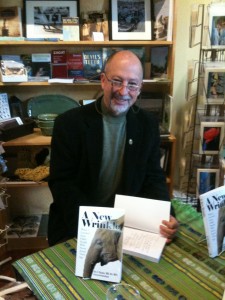 Sally Benson and Dr. Shapira’s wife, Susan
Sally Benson and Dr. Shapira’s wife, Susan
Angelo Mithos: On Montara’s Dangling Rails
Story by Angelo Mithos
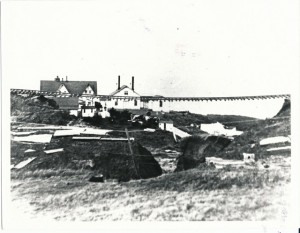
John Vonderlin: Great Inventions of HMB: Mr. Downing’s Portable Hay and Feed Rack
Story by John Vonderlin
Email John: [email protected]

Hi June,
John Schmale: On Viaducts
Story by John Schmale
John Schmale is the author of the “Petaluma and Santa Rosa Railroad”
Email John Schmale: [email protected]
Hi John, Angelo, June,
John Schmale
This is what a field of tussocks looks like in New Zealand


On my drive through New Zealand’s South Island this sight never hurts the eyes. They look like grasses, and we who live in Half Moon Bay might have one or two or three grasses in the garden but these tussocks come in masses and their golden color, texture and shape never bores. The tussock covered landscape reminds me of one huge mural, as big as you can imagine.
Some people say there are great similarities between the bucolic scenery of the Coastside and New Zealand’s remote South Island–and it’s true, if you visit, many sights will seem familiar. You will think, gee, that reminds me of back home. It definitely does. But here there is just so much more of everything, and it seems to be designed by an artist who was a perfectionist. There are no natural flaws here. I’ve commented before that the color of the water is dazzling, call it turquoise, aquamarine, opal or eggs nest blue. The colors will call to you, draw you in. It’s also freezing cold.
Lakes are everywhere, so pretty and blue they must have inspired the authors of old-fashioned fairy tales. There are thousands of cows, black and white, brown and white, deer, Elk, sheep, white and merino, and heaps of stunning rocks that come in as many shapes and sizes as do the endless mountains, some with what appear to be hanging gardens. Along one stretch of road someone began the tradition of gathering rocks into a small pile and every few feet this has been replicated. I stopped the car and made one of these piles myself–it’s kind of like leaving a tiny bit of yourself in the midst of the giant-sized scenery.
Having recently finished an Arcadia book on Moss Beach, I was handling many photos of the early 20th century beach landscape, very different from what it looks like today. In the early 1900s there were many “natural curiosities” (caves, spouting rocks and elegant arches) to see at Moss Beach–it seemed to be in a more primitive state which reminds me of the South Island beaches I’ve had the pleasure of seeing during the past week.
Kiwis are very proud and protective of their South Island with its massive collection of landscapes, one spectacular painting after the next.
John Vonderlin: Pilarcitos Honey was the “Bee’s Knees”
Story by John Vonderlin
Email John: [email protected]


